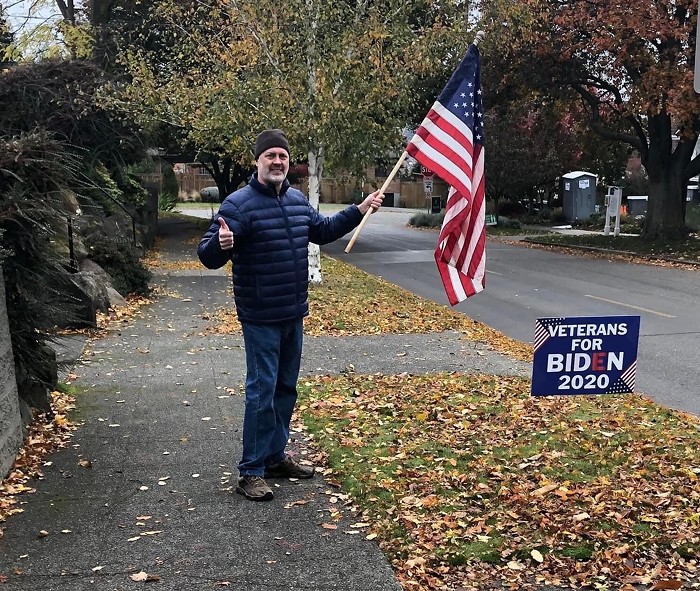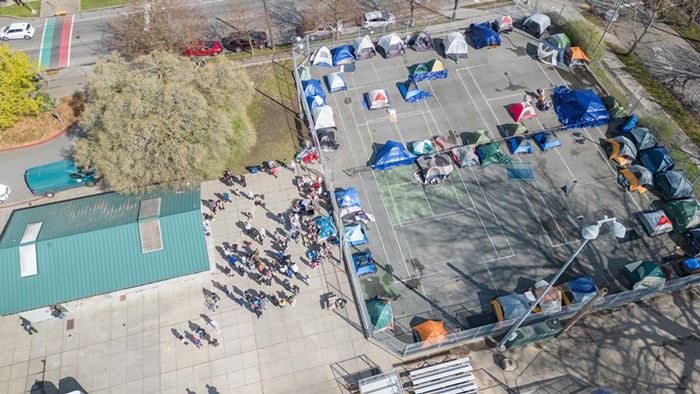The city of Seattle's transportation division is putting the finishing touches on the state application, which is due to the Washington Traffic Safety Commission, the state agency in charge of the camera projects, by October 4. If the state grants the application, Seattle will move forward with the camera project immediately and begin issuing tickets through the mail. Last year, Mayor Schell's Maintenance and Mobility initiative set aside $200,000 for an intersection camera project. Each camera, usually made by military contractors like Lockheed Martin, costs $50,000 to $100,000. The $200,000 would pay for one four-way intersection. Seattle intersections being considered for camera surveillance include Boren and Olive Way, Fifth and Mercer, Sixth and James, and MLK Jr. Way and Othello. As Seattle gears up to install the cameras, an important and obvious question arises: Is there actually a problem with people running red lights?
We're not sure. There's plenty of data about intersection fatalities and injuries. But there are very limited statistics showing that drivers run red lights in large numbers. In Seattle, there is no evidence at all. Washington Traffic Safety Commission data from 1996 showed that some cities, like Bellevue and Lynnwood, were experiencing an increase in red-light running. Seattle was not included in the five-year-old stats because neither the city nor the police department keeps track of red-light running. "We don't keep statistics in that fashion," says Seattle police spokesperson Pam McAnna. The only current numbers on the subject come from an insurance lobbying group. A 2000 study by the Insurance Institute for Highway Safety estimates that red-light violations result in 800 deaths nationwide. That figure represents just two percent of the national traffic death toll. If the problem of people running red lights is hard to quantify, why is Seattle considering such a costly and problematic project?
In other cities where the cameras are being tested, like Chapel Hill, North Carolina, early data does indicate a reduction in intersection traffic accidents. But national figures show that intersection accidents have the lowest fatality rates. According to the Fatality Analysis Reporting System's 1999 report, 2,803 people died at intersections in 1999, out of 41,611 total killed in car crashes. (There were over six million crashes.) Of course, traffic deaths in any numbers are troubling, but are intersection accidents--especially ones that no one knows for sure were caused by red-light runners--the best place to allocate city money?
In addition to the lack of data about actual red-light runners, the automated cameras themselves are problematic. Besides the obvious privacy concerns and the high cost, owners of the ticketed vehicles are responsible for the fine whether they were driving the car or not. In Baton Rouge, Louisiana, the state legislature struck down an automated traffic proposal because of that very issue. In Los Angeles, where red-light cameras have been in effect for over a year, the L.A. Department of Transportation reports that only 30 percent of violations get paid. Some tickets are never sent off because the camera photos are too blurry to recognize the license plate number or the driver. The tickets also may be dismissed because registered owners prove they weren't driving the car, or that they ran the light because of extraordinary circumstances, like making way for an ambulance. The Los Angeles Times reported in a May 10, 2000 story that "despite the low percentage of paid tickets, camera enforcement is expected to add about $7 million a year to city coffers." This raises another important question about cameras in Seattle: Where will the money go?
Funds generated from camera enforcement in Seattle will go directly to the city's general fund, where the money won't necessarily be earmarked for traffic projects, according to the Washington Traffic Safety Commission. The more tickets issued, the more money Seattle makes. This has critics--like the ACLU and some Olympia legislators--concerned that the cameras will be used more as a city profit generator than as an enforcement tool. (Some L.A. critics have alleged that the city shortened the amount of time a yellow light stays yellow, thereby increasing people's chances of getting ticketed by the cameras. Each ticket in L.A. costs $27; Seattle tickets would be $86.)
Despite the lack of data and the many problems other cities have experienced with the automated cameras, Seattle is cruising full-steam ahead to get the cameras in place by the end of the year. There has been no public vote on the cameras, yet city officials seem confident that the public wants them. "We've gotten a lot of positive feedback," says SeaTran special assistant Mike Estey. A simple poll conducted on the King County website last week showed that 195 people were in favor of the cameras and 153 were against them.

















